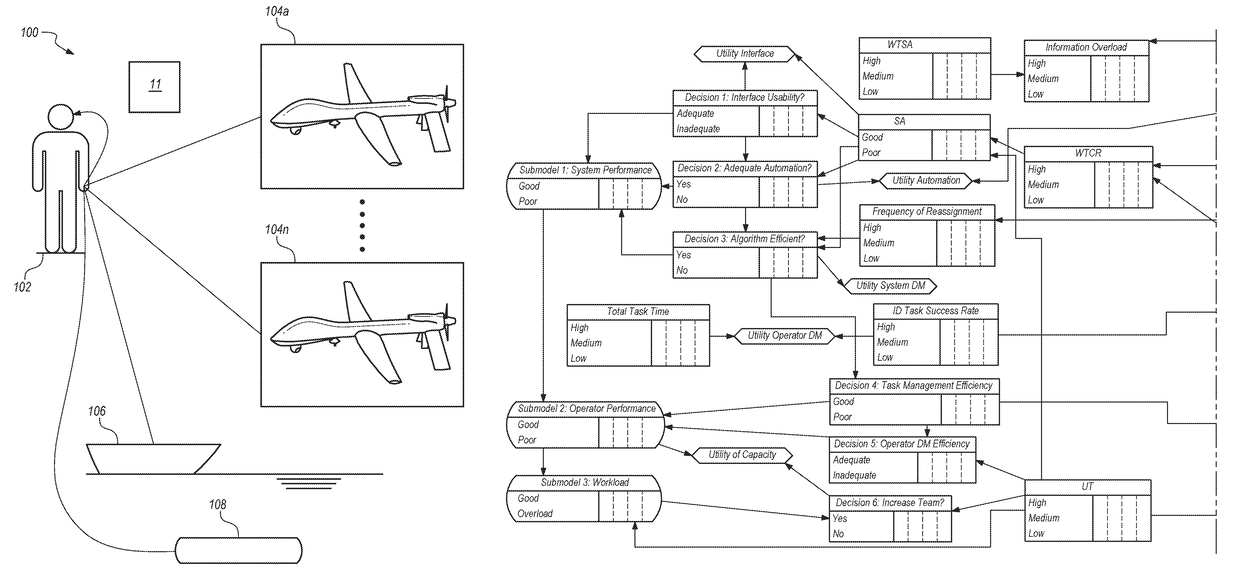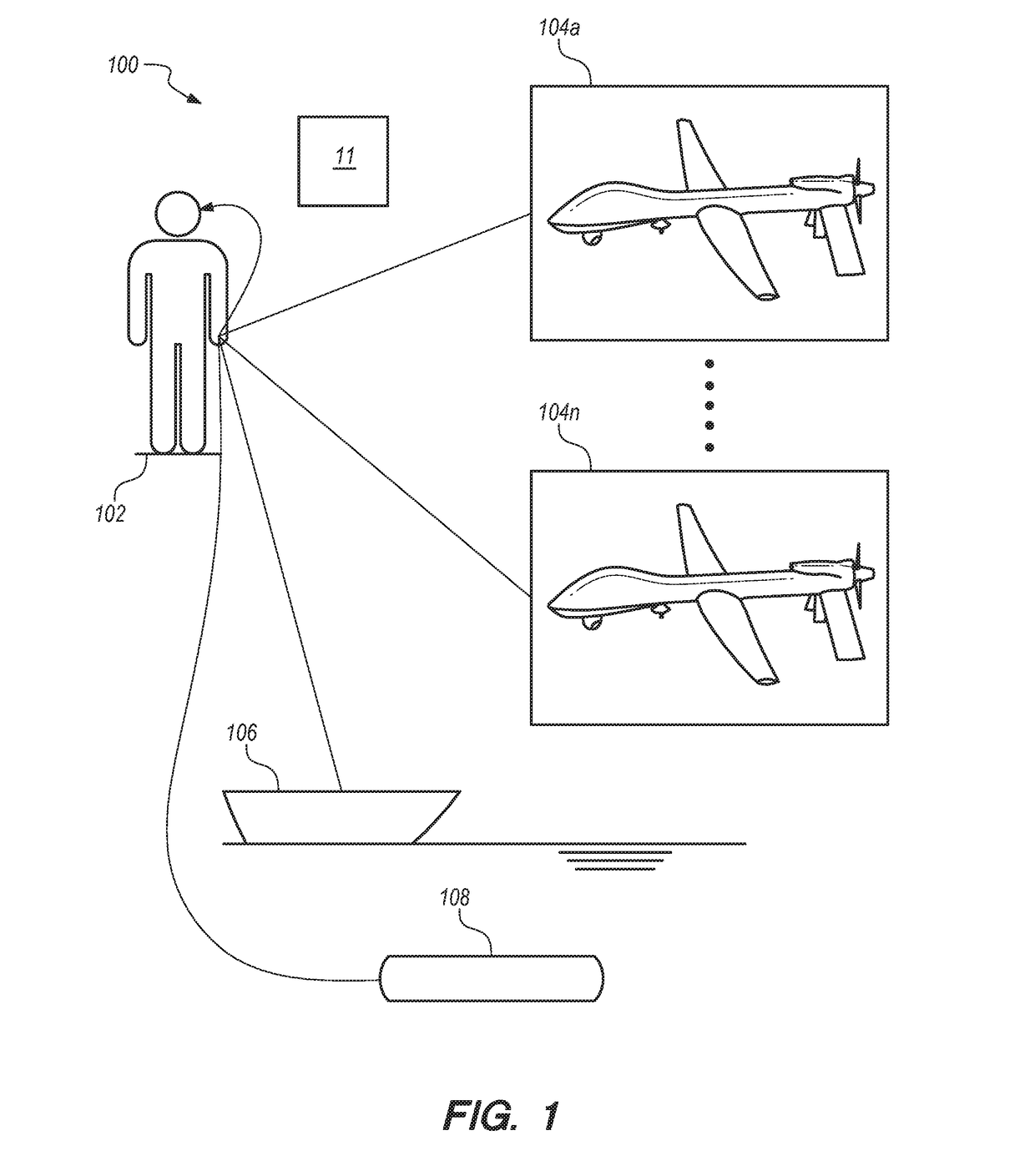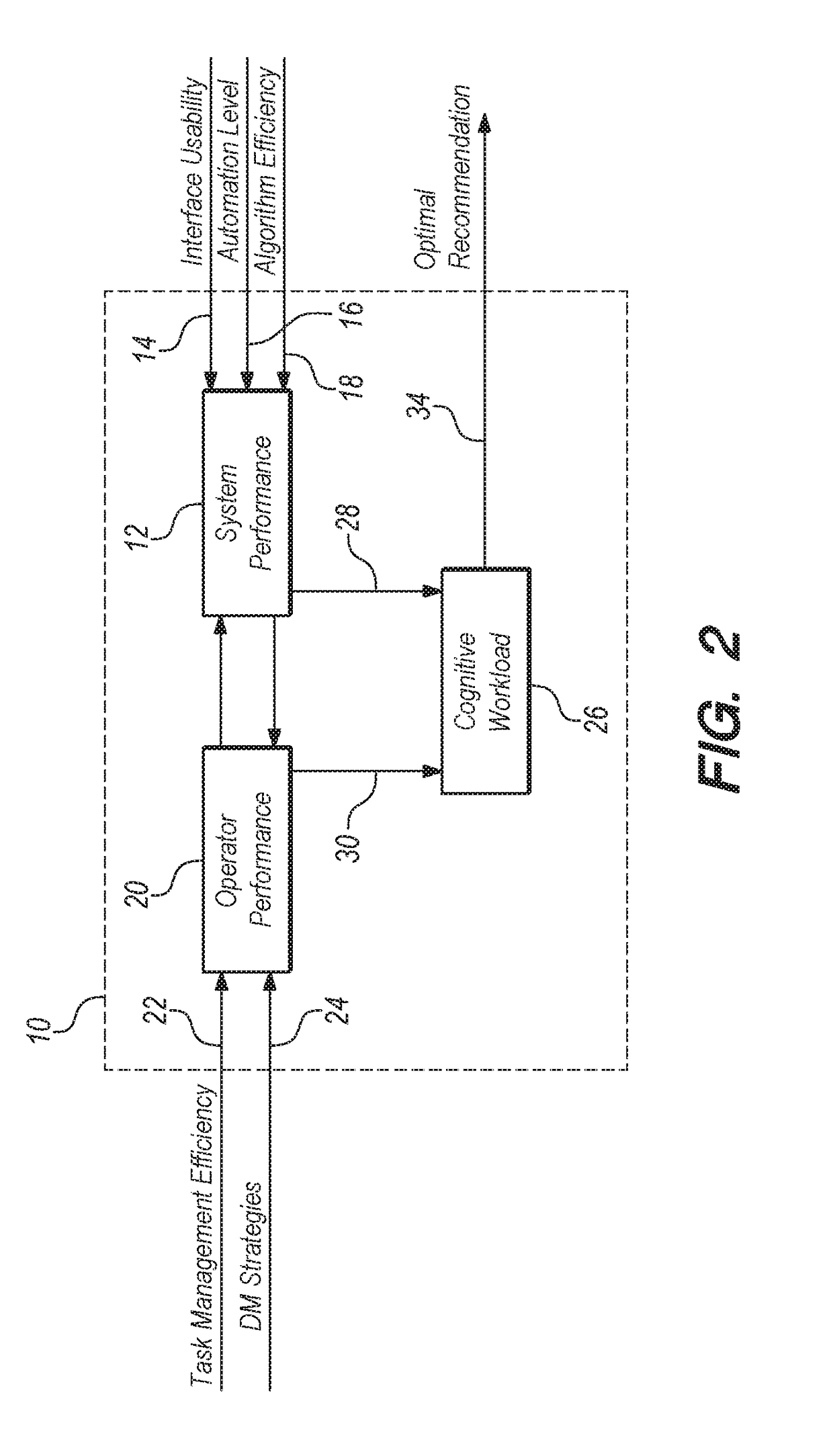System and method for predicting an adequate ratio of unmanned vehicles to operators
a technology of unmanned vehicles and operators, applied in the field of system and method for predicting an adequate ratio of unmanned vehicles to operators, can solve the problems of increasing the ratio of uvs to operators exponentially, and reducing the awareness of the situation
- Summary
- Abstract
- Description
- Claims
- Application Information
AI Technical Summary
Benefits of technology
Problems solved by technology
Method used
Image
Examples
Embodiment Construction
[0028]In brief overview, the decision tool of the present invention can help decision makers in the Department of the Navy decide whether funded autonomous system's technologies can transition into practical applications for the Navy. The decision tool provides decision makers with a means to evaluate the system's performance under a specific set of decision requirements and realistic mission conditions.
[0029]In the operation of unmanned vehicles (UVs), mental workload can be a limiting factor in deciding how many UVs an operator can control or supervise. In the case of one operator supervising multiple vehicles, the operator's workload is measured by the effort required to supervise each vehicle and the overall task. The effort required to supervise an individual UV in a team depends on the efficiency of the system to reduce workload and increase situation awareness. Moreover, workload also depends on the complexity of the mission scenario (the overall task). Some of the characteri...
PUM
 Login to View More
Login to View More Abstract
Description
Claims
Application Information
 Login to View More
Login to View More - R&D
- Intellectual Property
- Life Sciences
- Materials
- Tech Scout
- Unparalleled Data Quality
- Higher Quality Content
- 60% Fewer Hallucinations
Browse by: Latest US Patents, China's latest patents, Technical Efficacy Thesaurus, Application Domain, Technology Topic, Popular Technical Reports.
© 2025 PatSnap. All rights reserved.Legal|Privacy policy|Modern Slavery Act Transparency Statement|Sitemap|About US| Contact US: help@patsnap.com



